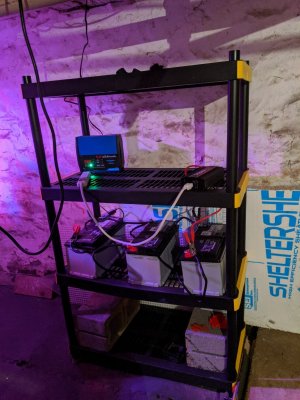I made my own battery backup. It uses a 110v power relay to automatically switch between wall power and the battery backup. I used a couple of 7 amp hour batteries sealed lead acid batteries. My icecap 3k gyre pump comes with a 24v DC power supply, so I was going to run two 12v batteries in series, but it turns out the pump runs just fine on 12 volts. So I run the batteries in parallel (+ to + and - to -) to keep 12v and just add amp hours. I then added a 12v battery maintainer to keep the batteries fully charged.
I made a video how I put I put it together with (unpaid) links to the items used in the description.
I made a video how I put I put it together with (unpaid) links to the items used in the description.




















